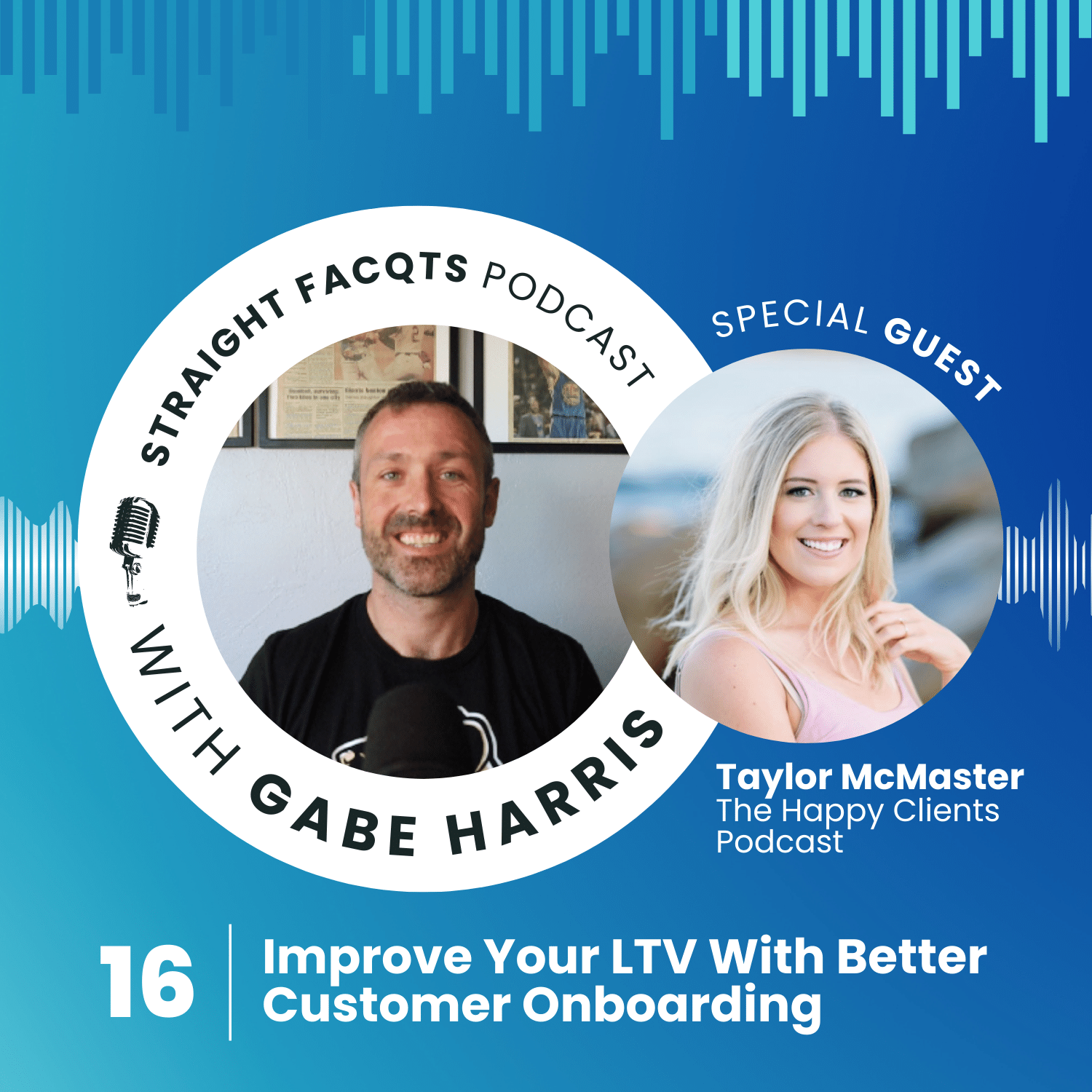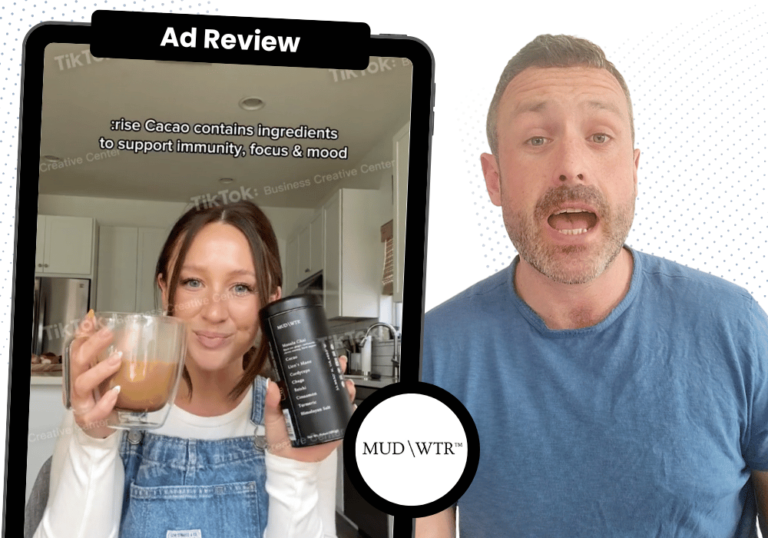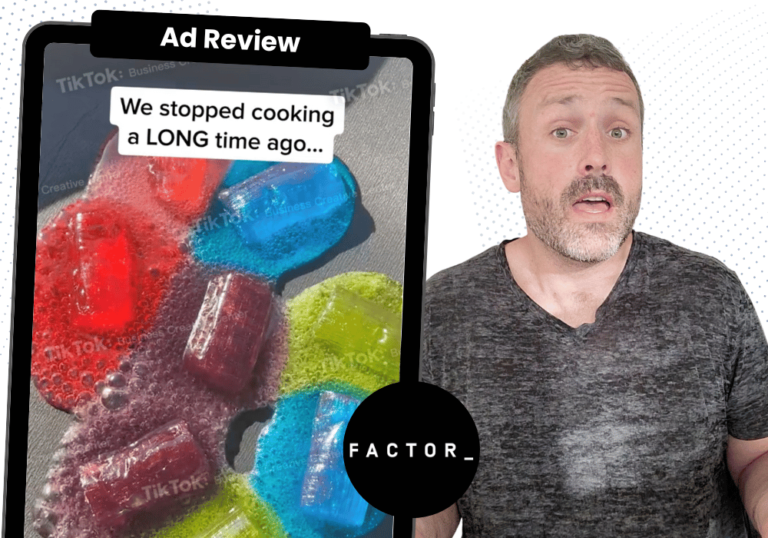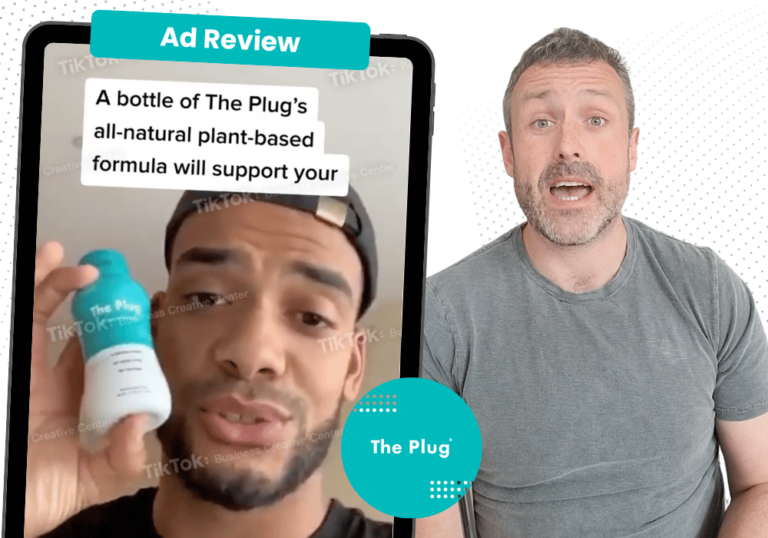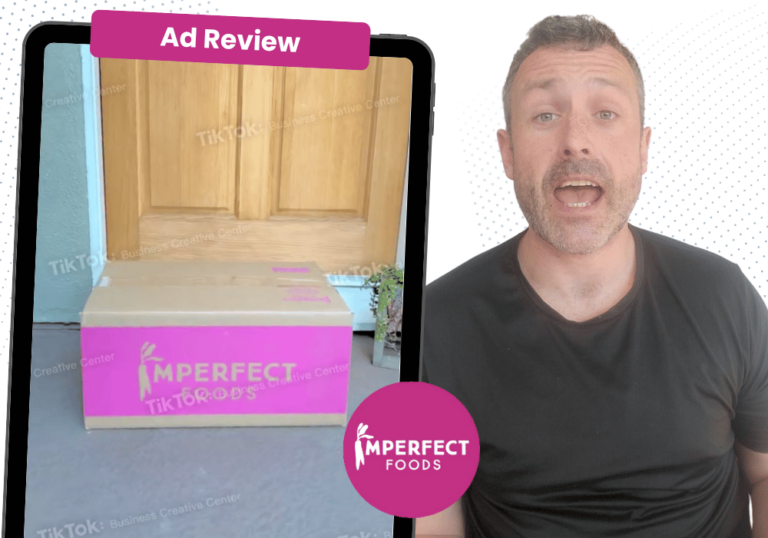On this episode of Straight Facqts, we’re talking to Taylor McMaster, CEO of DOT & Company, where we dive deep not just in terms of acquiring a customer but how you can be able to nurture them. Which is something that DOT & Company does — how you can be able to get a longer lifetime value by having better customer onboarding. Let’s get into it!
Gabe Harris:
Taylor, excited for you to be able to join us today on Straight Facqts, and just to be able to give us a little bit more context, I imagine you can do a much better job of describing what DOT & Co. is better than I can. Can you give us the elevator pitch?
Taylor McMaster:
Sure! So, we are DOT & Company. We are client account managers for marketing agencies.
Really, our goal is to remove the agency owner from that day-to-day, client-facing seat so they can grow and scale their business while we take care of everything that’s going on. So, client relationships, project management, communication, all that good stuff.
Gabe Harris:
Awesome, because I know with advertisers, a lot of them are going to be concerned about what’s their lowest cost per lead? Cost per acquisition?
But really what makes everything go is getting that lifetime value of the clients. It makes it worth going after those higher acquisition costs if you know you can be able to get the client not just for six months but for a year, two years, maybe even longer. It’s going to be able to grow your entire marketing game in general.
So, that’s awesome that you’re focusing on growing that lifetime value.
I imagine a lot of agencies are not doing their best foot forward as they possibly can. Could you speak a little bit more into that? Just the opportunity that you’ve noticed that companies out there are not growing their lifetime value and how you’re able to help grow that as well?
Taylor McMaster:
Oh yeah, we see this so much. And the way that I kind of look at it is you want this role, an account manager, to be a profit center, not a cost center.
So, oftentimes agencies will be looking at their profit and loss or their statements and saying, “Okay, we have a cost of this employee. They cost us this much a year and how do we even see an ROI on this?”
And I want to flip the script when it comes to hiring an account manager because it should be a profit center. These people should be increasing your lifetime value, just like you said, Gabe, right?
We want the client retention to be high, we want client happiness to be high. We want referrals to be high, we want their experience to be just amazing. That’s the way that we treat this role. It’s very important inside of the business that this account manager can do all of those things.
They can speak to clients and build relationships, they can project manage. They can communicate way faster than the agency owner can and way more efficiently. And they can just give this amazing experience.
“Once you do find that person in your agency, you’ll just see the retention, the happiness, the referrals.”
So, how we train our team members to be kind of this profit center is we need them to be the cream of the crop when it comes to account management. They need to already know marketing strategy. They need to already be amazing communicators, both on video and written communication skills.
Furthermore, they need to be extremely detail-oriented. So when the client asks for something, they’re quick and they can get that back to them. And that they can just juggle all these things at once.
Once you do find that person in your agency, you’ll just see the retention, the happiness, the referrals. All those things increase when you look at this role as a profit center.
Gabe Harris:
Taylor McMaster:
Gabe Harris:
For a company that does an agency, maybe they do a couple clients, maybe they do a couple dozen clients. But you’re doing hundreds of clients, and you really know what works and what does not. So, that’s kind of cool.
I imagine that if you find an agency that is not doing a good job, say that they don’t even have any onboarding documents. Or they’re terrible at templates of communication. They’re terrible at just showcasing their data or their weekly meetings that you guys will say, “What you’re doing is wrong or I would highly, highly suggest not to do it this way.”
Taylor McMaster:
Yeah, well, it’s like the first date, right? The onboarding experience.
“We want to make sure that everything’s buttoned up, everything’s nailed down. Things are organized, and clients feel like they are the only client within the agency. That is kind of our goal.”
As soon as you sell the client, they’re all excited, and they come on board. Then if you’re not all over that client giving them their onboarding documents, we call it the Daily Pulse, communicating with them every day, if you’re not doing all these things, then your relationship isn’t going to be… We think of this as the first date, right?
So, we want to make sure that everything’s buttoned up, everything’s nailed down. Things are organized, and clients feel like they are the only client within the agency. That is kind of our goal.
Over the years, we’ve kind of figured out, oh, onboarding is our thing. We love onboarding clients.
So, now we help a lot of agencies, especially as they’re getting started. Maybe they have a couple clients and they’re not quite at the position to bring in an account manager. We help them with setting up their systems and making sure they understand the best practices because that is so important when it comes to building that relationship for the long term.
Like you were saying, Gabe, lifetime value is so important. So, how can you make sure that they’re going to stick around for a long time? And that starts with the onboarding process.
Gabe Harris:
Yeah, and like you were saying as well, you need to be as impactful.
You need that first date to really go off to make sure that there’s more dates going down the line, and hopefully you can get a really nice, tight marriage as it’s just like say if you started a new job.
If you are not working hard for the first three months, I am going to judge you that you’re never going to work hard.
Taylor McMaster: “You should be asking for a referral or asking for feedback within the first seven days.”
Exactly. Right? And I heard this stat that you should be asking for a referral or asking for feedback within the first seven days.
Somebody should be already wowed within the first seven days. So, if you think about that, every single day that goes into that is so important.
If you’re not communicating with them every day, if you’re not sending them onboarding documents right away, if they don’t know what to expect, if you’re not scheduling that kickoff call right away, they’re going to be like, “Hey, I paid you. What are you doing with my money, or where are we going from here? What’s next?”
And if you can just get in front of all that, then they’re going to trust you for the long run.
Gabe Harris:
Yeah, and that’s cool. So, getting referrals in seven days, I did not know that should be optimized, if you have an emotional peak in seven days.
Taylor McMaster:
Oh yeah. Yeah, within seven days they should already be referring people to you, apparently.
Gabe Harris:
So, that’s cool. You’re providing more value as well to where you’re giving the clients even more referrals within seven days. You can be able to prove your value within a week, like, “Hey -”
Taylor McMaster:
You should be able to, yeah.
Gabe Harris:
“We just got you a new client.” It’s like we’re already paid for.
Taylor McMaster:
Exactly, yes. And clients, as much as we can say there’s SOPs and processes and checklists for everything, you’re working with humans and humans have emotions and they want to feel like you care about them.
“Especially in this remote world, you’re not meeting them for coffee, you’re not taking them for lunch. You’re communicating with them online.”
So, the more that you can prioritize that in every single step of your client management process, the better because if you forget to email them for a week or you’re not checking or giving them updates, they’re just going to feel like you’ve forgotten.
And especially in this remote world, you’re not meeting them for coffee, you’re not taking them for lunch. You’re communicating with them online. You have to put even more effort into it.
Most agencies come to us because they’re like, “I do not have the time to handhold my clients, to give them updates every single day, to send them gifts, to send them reports. I just don’t have the time for that.”
And that’s when clients start to leave or they’re not getting that experience that they deserve. So, that’s when they’ll come to us, they’re like, “I just need help. I either need somebody to do this for me or I need a process, I just need a better situation for client management.”
Gabe Harris:
Cool. And to get a little deep into giving those updates, and I’m a victim of this myself. Say there’ll be a couple really good days that you’re excited for. For instance, if our meeting’s on Thursday. I’ll just wait to tell you that good information on Thursday when really there’s value building that relationship to have constant communication.
But how does that integration work for you guys to be able to get that data and to get those updates?
Would it be a close communication that I would have with the account rep and they’ll be asking me questions and filtering that to the clients? Or how does that flow work to make sure that there is a constant communication with the client?
Taylor McMaster:
Yeah, so most times I would say the account manager is the only client-facing person. Then there’s maybe a media buyer or a strategist that’s working internally.
So, the account manager works really closely with those folks so they know where the updates are. They might be even looking in the back end of Facebook Ads Manager, checking things.
“A huge part of the account manager role is keeping clients happy.”
If there’s a launch, the account manager’s always all over it making sure we know how many sales there’ve been or things like that, and a huge part of the account manager role is keeping clients happy.
So, we actually care about their results. So we’re always asking the media buyers or we’re asking the strategists, “Hey, where’re we at with this? Any improvements or any wins, or can you let me know something I can let the client know?”
Because we have a process internally called the Daily Pulse. You may have heard that on some of the podcasts that I’ve been on, but we talk all about updating clients frequently, almost every day, whether you have something to say or not.
“Just being really proactive is always helpful for the client.”
So, if it’s a Monday and you’re like, “Oh my gosh, we have an amazing click-through rate, things are looking awesome,” I might send the client a quick update and say, “Hey, click-through rate has improved, we’re super excited, can’t wait to chat on Thursday.”
Then maybe Wednesday I might send them like a pre warm-up to the call, “Here’s the report, here’s what we’re going to go through. If you have any questions ahead of time, please let me know so that I can pull in the right person.”
And just making sure that they’re always being updated and giving them wins as soon as they possibly can to keep them excited.
Then of course, on the meeting they’re going to come into that like, “Oh my gosh, things are looking great.” Or “I know exactly what we’re going to be talking about on this meeting.” Just being really proactive is always helpful for the client.
Gabe Harris:
Cool. And I can imagine one of the bigger fears for agencies to be able to bring DOT & Co. on, and this is what we were talking about a little bit prior to going live, is your agency is your baby and handing that information off to somebody else for a client communication could be really hard to let go and trust.
So, could you speak a little bit about the quality of people going through the hiring to make sure that these are the people at DOT & Co. that we want to be able to trust to have them communicate with the clients, so that we know that DOT & Co. is putting your agency to the best possible position they can with that communication?
Taylor McMaster:
Mm-hmm. Honestly, Gabe, every agency I talk to asks that question. And I love it because it shows that they actually care about their client relationships.
They care enough that they’re like, “Oh, I don’t know if clients are going to be upset,” things like that. I’m like, “Oh that’s great, don’t worry because it doesn’t happen the first day and the longer the relationship that you’ve had,” we have agencies that have clients for 10 years. So, obviously, it’s not going to be like, “Hey, this is Taylor, your new account manager. See ya.” It’s going to be a very client-centric approach.
“The account manager is going to be leading the meetings. They’re going to be answering your questions and they’re just going to start to go to this account manager instead of you because they’re getting answers quicker.”
You’re going to bring this account manager in and show the client that, “Hey, I have this amazing account manager. She’s here to help me give you a better experience.”
And then over time, maybe it’s a couple weeks, maybe it’s a month, the client’s going to start to hear from your account manager quicker than you, or their reports are going to come from your account manager.
The account manager is going to be leading the meetings. They’re going to be answering your questions and they’re just going to start to go to this account manager instead of you because they’re getting answers quicker, because they feel more supported, and then they start to feel that experience kind of up leveled and then they see, “Oh, the owner of the agency isn’t going anywhere, but I now have this point of contact that I can just go to way quicker.”
“Everyone on our team, we’re marketers first.”
And so, that’s kind of the goal when you bring in an account manager is you can still be involved as much as you want, but you also have this support system. That’s why you have us here.
So, when it comes to, I know you said, kind of our hiring process, everyone on our team, we’re marketers first.
So, we can actually step in there and speak to marketing strategy and actually understand what we’re talking about versus just having somebody who doesn’t really understand the marketing come in, which can take a lot longer to transition client accounts over to, if the person doesn’t kind of have that marketing background and understanding.
Gabe Harris:
All right, cool. Now, one of the challenges I imagine that you and everybody else is having is hiring the right people.
Obviously, you want them to be qualified, to be interested in marketing, and not just good at marketing but actually interested in marketing. And I think that there’s a difference there because if you’re good at marketing but you hate it, you’re not going to want to get out of bed every day and actually work. I could have put that a little bit better as work, but —
Taylor McMaster:
So true.
Gabe Harris:
Two companies can hire the same person and that person can flourish on one company and what is now a quiet quit on the other company.
So, can you speak a little bit to how you actually get people inspired every day to be able to do their best with onboarding, to be able to keep those relationships with the agency?
Taylor McMaster:
Honestly, yeah, so many, and exactly what we were saying offline, Gabe, hiring is one thing and it is really challenging. But when it comes to keeping those people, it’s a whole different story.
I think where we do things differently is that we realized ‘– well, this is how I work — if I’m not challenged in multiple different ways and kind of wearing multiple hats, I get bored.
And so, that’s kind of why our model works so well for our team is that they get to work in multiple agencies at once. They get to be fractional. They get to pulse and to note throughout the day to two different agencies, sometimes three. That keeps their day very fun and unique.
But then they also have the DOT & Co. family, the team where we’re all account managers, so we’re all client facing, we’re all kind of on the front end of things. So we are there to answer questions, support, give examples, and then always give them additional resources or training.
“The biggest thing is variety in our work that we all kind of love. We get to work with different clients and agencies, and it just makes the day really exciting.”
Maybe we have an SOP for something random. We’re like, “Hey, if you need this, here you go,” and it’s this really cool feeling that “Hey, we’re all account managers and we’re all coming together with the same goal of keeping clients happy.”
So, the biggest thing is variety in our work that we all kind of love. We get to work with different clients and agencies, and it just makes the day really exciting.
Gabe Harris:
So, I didn’t think about this until now, but working at different agencies, does this also give the possibility of, say one of my clients is looking for somebody who does SEO and I suck at SEO. I don’t want to touch it, but I imagine now this is a network.
You’re like, “Taylor, do you know anybody that does local SEO for yada, yada, yada?” Then you’re like, “I’ve got the perfect people for you.” I imagine that’s a really easy transition as well because there’s already communication going.
There’s already structure of communication to be able to bring in somebody that can do SEO or whatever other packages that your client may need.
Taylor McMaster:
Exactly, yes. All the time. So, agencies might come to us or account managers and say, “Hey, I need a copywriter for this, or I need a graphic designer or SEO or media buyer. Does anybody know anybody?”
And we have a directory for our own agency clients. So, for example, we’re hiring our SEO agency through one of our clients. I’d rather hire one of our own agencies.
So, it’s definitely this amazing network that we’ve been able to build over the years. To give our agencies and our account managers different connections which, yeah, gives the client just an even better experience.
Gabe Harris:
Cool. So, if somebody was looking at DOT & Co. and said, “Today is Wednesday and I’m hiring a client or onboarding a client on Friday,” I imagine that’s probably not enough time to be able to get DOT… Your eyes are —
Taylor McMaster:
No.
Gabe Harris:
You’re like, “No, no, no, no, no. I need a little bit more.” But what is a good timeline to be able to bring DOT & Co. on board if you’re looking to be able to improve these conversations and also alleviate the conversations a little bit with yourself and that client?
Taylor McMaster:
Yeah. So, we generally work on a wait-list. As you can imagine, the service that we provide is very much so needed in the industry.
At the time that we’re recording this, September 2022, generally two to six weeks is kind of what we say. Sometimes it’s a little bit longer, sometimes quicker, kind of in that range is how it works with us.
“We really want to make sure that we put the right person in place, that they have this long-term feeling with this account manager.”
We do have long-term clients, so churn is really low. It does take a little bit of time to get somebody in. But we also look at this as a long-term solution for agencies.
So, we really want to make sure that we put the right person in place, that they have this long-term feeling with this account manager. We do take our time when it comes to matching as well which is, I think, the most important bit.
Gabe Harris:
So, how long would the communication be with the agency? You said two to six weeks. Would that be at the very shortest, two weeks of communication with the client before they even start talking about onboarding a new client?
Taylor McMaster:
So, I would say it would take two to six weeks, like a start date from an account manager starting in their agency. And then once an account manager starts in the agency, we like to say anywhere around a month to get fully taking everything over.
But definitely starting from day one, we’re in there optimizing, learning what you’re doing, giving you new onboarding processes. Or we’re helping to talk to clients and keep everything running smooth.
So, it’s not like this choppy transition. We definitely want to make it smooth.
Gabe Harris:
Yeah, yeah, I imagine you always want to make it as seamless as possible. By the way, I know you don’t do sales, and I would know you would hate to do sales, but you always want the audience to be aware of what the future is. So, aware about DOT & Co., not the name, but aware that they’re going to have account management. So, where do you see aligning with sales to make that a seamless transition?
Taylor McMaster:
Yeah. So, in the process generally when an agency sells a new client, they’re almost talking up the account manager on those sales calls. And then the next step after they sign, they pay, then you transition it over to the account manager.
Essentially right from day one, they’re kind of overlapping a little bit near the end. Then the relationship’s completely gone to the account manager.
So, we don’t want to keep the sales team involved in anything other than they need to be. But yeah, it’s just kind of like an immediate transition.
Gabe Harris:
Cool.
Taylor McMaster:
Does that answer your question?
Gabe Harris:
Yeah, yeah. I did not have an answer to that question going in, so yeah, that is good.
So, curious, you going through this and you getting really deep into customer onboarding, client communication, what’s something that you guys have learned over the past six months to a year that was kind of a little epiphany like “I did not know this is the way it should be done,” or “We made this one little tweak and it changed everything”?
Taylor McMaster:
Yeah, I would say our hiring process has been the biggest evolution over the last 12-ish months, and really just figuring out what works and keeping at it.
I think the biggest thing that most agency owners do is change things all the time. And we were like, “No, this is exactly what we’re going to do. We’re going to keep doing it.” So, for example, our hiring process, we have applicants go through our training process, our seven modules of CAM School throughout this hiring process.
And by doing that, it has absolutely changed our flow when it comes to getting account managers on board, the speed, and things like that. So, I would say our hiring process has been the biggest beast of changing it but leaving it over the last year. And it’s working really well. So, it’s definitely been one of those game-changing moments.
Gabe Harris:
And I imagine that’s been game-changing for your clients as well. So, by having them better prepared for new clients, it’s been an easier transition for you too.
Taylor McMaster:
Absolutely. I know confidently that any one of my team members is an amazing account manager by the time they get in there. So our hiring process just gives us all this confidence, and now we just have so many gut checks in there. And yes, it’s amazing for our clients as well.
Gabe Harris:
And I imagine less headaches on your part as well.
Taylor McMaster:
Definitely.
Gabe Harris:
Cool. Well, Taylor, if anybody’s looking to find out more about DOT & Co., where can they be able to find out more and where can they be able to find information about you if they wanted to dive in after this podcast?
Taylor McMaster:
Yeah. So, if you want to learn anything about account management, head over to dotandcompany.co and you’ll find everything there, all about us, our training, our shop. Then I’m over on LinkedIn, Taylor McMaster, and happy to connect with anybody.
Gabe Harris:
Awesome. Well, Taylor, thank you so much for your time. I have definitely learned a lot and excited to explore DOT & Co. myself. Thank you so much.
Taylor McMaster:
Thank you so much for having me, Gabe.
Thanks for listening to our customer onboarding podcast with Taylor McMaster!
Watch the video here:

